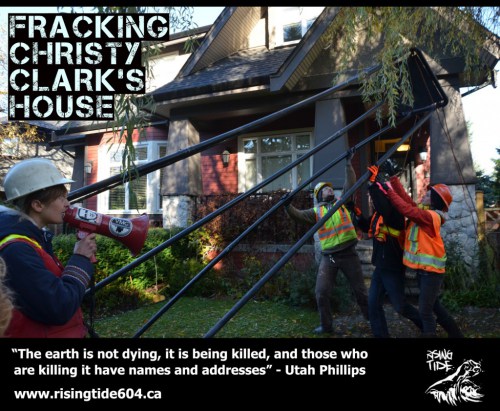Bloomberg News
WASHINGTON — Crude oil shipped by railroad from North Dakota is drawing fresh scrutiny from regulators concerned that the cargo is adding environmental and safety hazards, something that analysts say could raise costs.
The Federal Railroad Administration is investigating whether chemicals used in hydraulic fracturing are corroding rail tank cars and increasing risks. Separately, three pipeline companies including Enbridge Inc. warned regulators that North Dakota oil with too much hydrogen sulfide, which is toxic and flammable, was reaching terminals and putting workers at risk.
Until last month, safety advocates’ chief worry was spills in derailments. After tank cars blew up July 6 on a train in Quebec, investigators in Canada are considering whether the composition of the crude, which normally doesn’t explode, may have played a role in the accident that killed 47 people. The oil was from North Dakota’s Bakken shale.
“Crude historically has not been considered in the highest category of hazmat,” said Anthony Hatch, an independent analyst in New York who has tracked railroad companies for almost three decades. “The risks have been considered to be environmental, not to humans. Perhaps Bakken crude should be considered in a higher category.”
The cost of added safety measures, such as tighter rail-car specifications that would make obsolete some current models, may become an issue if oil prices fall, according to Kevin Book, managing director at ClearView Energy Partners, a Washington-based policy-analysis firm.
“The solution to rail safety issues looks like unanticipated costs, whether, it be rail car investments or new safety protocols,” Book said.
Such costs are less likely to slow production when is oil trading for $100 or more per barrel, Book said. “At $75 per barrel, it could be a big deal,” he said. Crude oil futures have traded higher than $100 a barrel since July, and are more than $90 a barrel since late April.
North Dakota is the nation’s second-biggest oil-producing state, with more than 790,000 barrels a day this year up from from about 150,000 barrels in 2008. Railroads move 75 percent of the state’s crude, including the load of more than 70 cars that derailed and exploded last month in Lac-Megantic, Quebec.
Canadian regulators are testing the composition of crude from the wrecked Montreal Maine & Atlantic Railway Ltd. freight train. A question they say they’re asking is why the derailment led to such an intense inferno, which regulators have called “abnormal.” They visited North Dakota as part of their review, said Chris Krepski, a spokesman for the Transportation Safety Board of Canada.
“We did take samples from the tank cars to get a better understanding of what was actually carried in them and verifying that against the shipping documents,” Krepski said. “It’s safe to say we’re looking at everything.
Montreal, Maine & Atlantic said last week it was forced to file for bankruptcy because of potential liability in the crash.
Much of North Dakota’s production relies on hydraulic fracturing or fracking, a technique in which millions of gallons of chemically treated water and sand are forced underground to shatter rock and free trapped oil. Highly corrosive hydrochloric acid is widely used to extract oil in the state, according to a 2011 report from the Society of Petroleum Engineers.
In a July 29 letter to the American Petroleum Institute, a Washington-based lobbying and standards-setting group for the oil and gas industry, the railway administration said it found increasing cases of damage to tanker cars’ interior surfaces. A possible cause is contamination of crude by materials used in fracking, according to the letter.
“If the hydrochloric acid is carried with the oil into rail cars, corrosion can be an issue,” said Andy Lipow, president of Houston-based Lipow Oil Associates.
Shippers need to know the properties of the oil to ensure that it’s transported in tankers equipped to handle the cargo, according to the rail agency’s letter. Because information provided to railroads on the properties of oil is not gathered from tests, the agency said it “can only speculate” as to the number of cars in violation of hazardous-materials regulations.
Investigating whether the chemical composition of Bakken oil makes it more likely to corrode tank cars is reasonable, said Peter Goelz, a former National Transportation Safety Board managing director who’s now a senior vice president with O’Neill and Associates in Washington.
The Quebec accident also revived a debate over the type of cars used to haul oil. For years, regulators and watchdogs have sought improvements to a common car design shown to be susceptible to rupture when derailed. The NTSB estimates that 69 percent of today’s rail tank-car fleet has “a high incidence of tank failure during accidents,” Chairman Deborah Hersman wrote last year. The agency recommendeds thicker shells and other modifications to strengthen the cars.
Sen. Charles Schumer, D-N.Y., this week called on U.S. regulators to phase out the older cars, known as DOT-111s, saying they’ve contributed to spills of hazardous materials.
“The DOT-111 tank car has proven particularly prone to spills, tears and fires in the event of a derailment, and it’s simply unacceptable for New York’s communities along the rail lines to face that risk when we know thicker, tougher cars could keep us safer,” Schumer said.
The rail industry is fighting a proposal to retrofit existing cars, saying it could cost as much as $1 billion.
Shippers also must account for hydrogen sulfide, a highly flammable toxic gas that at some wells is a byproduct of oil, to properly classify oil for transport. The Bakken oil field generally produces lighter oil with little or no hydrogen sulfide, though at times, crudes with different grades are mixed for shipping, said John Harju, associate director for research at the University of North Dakota Energy and Environmental Research Center, and co-author of the Society of Petroleum Engineers report on the Bakken reservoir.
“You see little blender facilities popping up all over the place along pipelines and rails,” Harju said.
In June, Enbridge won an emergency order to reject oil with high hydrogen-sulfide levels from its system after telling the Federal Energy Regulatory Commission that it found dangerous levels of the compound at a rail terminal in Berthold, N.D. In addition to being highly flammable, hydrogen sulfide in the air is an irritant and a chemical asphyxiant that can alter both oxygen utilization and the central nervous system, according to the U.S. Occupational Safety and Health Administration.
“We did discover that some of the crude coming into the system had much higher levels of hydrogen sulfide than we felt was safe for our employees,” said Katie Haarsager, an Enbridge spokeswoman. “Some blending may not have been up to levels in the past.”
Enbridge won FERC’s permission to refuse delivery of any oil with hydrogen sulfide that exceeded 5 parts per million, half the minimum exposure recommended by federal regulators. In a May 5 test, Calgary-based Enbridge, which owns and operates a 970-mile pipeline from Plentywood, Montana, to Clearbrook, Minn., found levels as high as 1,200 parts per million at its Berthold terminal “that could cause death, or serious injuries,” according to the company’s FERC filing.
Two other pipeline operators, Tesoro Corp. and the closely held True companies, which operates the Belle Fourche and Bridger pipelines in North Dakota, also found high levels of hydrogen sulfide in crude shipments. The FERC approved Tesoro’s request to reject oil with hydrogen sulfide at more than 5 parts per million effective Jan. 1. True companies was allowed to turn away crude with more than 10 parts per million of hydrogen sulfide effective April 1
True, based in Casper, Wyo., sent a notice to its Belle Fourche and Bridger customers in January warning that high levels of hydrogen sulfide “materially affected the common stream and created safety hazards at certain delivery locations.
North Dakota regulators say hydrogen sulfide is prevalent in oil wells in some areas and field inspectors are required to carry hydrogen-sulfide monitors.
“The fact that there were explosions, and crude oil is not supposed to explode, raises a lot of suspicions as to whether there were other chemicals and so on added to oil in the process before the shipment,” said Edward Burkhardt, chief executive officer of Rail World Inc., which owns the Montreal and Maine railway.
While derailments of trains hauling crude can create environmental messes, oil doesn’t usually ignite unless exposed to extreme heat, said Lloyd Burton, professor of environmental policy at the University of Colorado in Denver. Gasoline, refined from crude oil, is more more volatile.
“Crude oil doesn’t usually explode and burn with the ferocity that this train did,” Burton said.
![A Royal Proclamation day feast brought out over 300 to the anti-fracking blockade in Rexton, New Brunswick in early October. [Photo: Miles Howe]](http://www.tulalipnews.com/wp/wp-content/uploads/2013/11/image_of_blockade.jpg)












 Land owners and protesters gather on the steps of the Kentucky state capitol to protest the Bluegrass Pipeline. CREDIT: AP Photo/Dylan Lovan
Land owners and protesters gather on the steps of the Kentucky state capitol to protest the Bluegrass Pipeline. CREDIT: AP Photo/Dylan Lovan
 Milo Zeankowski-Giffin, left, and Max Griefen hold signs during a Montpelier, VT tar sands pipeline protest. CREDIT: AP Photo/Toby Talbot
Milo Zeankowski-Giffin, left, and Max Griefen hold signs during a Montpelier, VT tar sands pipeline protest. CREDIT: AP Photo/Toby Talbot
 Keystone pipeline in yellow, Eastern in blue and red. Graphic credit: Paul Horn, InsideClimate News
Keystone pipeline in yellow, Eastern in blue and red. Graphic credit: Paul Horn, InsideClimate News
 A worker cleans up oil in Mayflower, AR days after a pipeline ruptured and spewed oil over lawns and roadways. CREDIT: AP Photo/Jeannie Nuss
A worker cleans up oil in Mayflower, AR days after a pipeline ruptured and spewed oil over lawns and roadways. CREDIT: AP Photo/Jeannie Nuss
